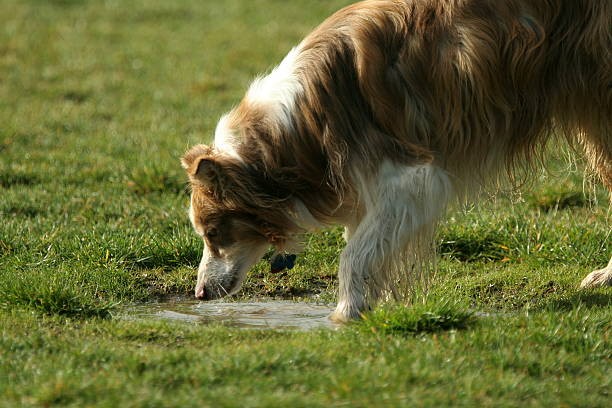Many dogs are crazy about drinking from puddles of water to quench their thirst on their daily walks. Dogs love rainwater – the quick refreshing drink in a puddle is a welcome temptation for our furry friends. Especially when it is warm outside, the puddles of water are used to splash around and slobber. After all, they not only smell damn good, they also taste much better than the often chlorine and lime-containing “human water.”
“What if my dog drinks from a puddle ?” I encounter this misunderstanding more often when I have to play the spoiler again and forbid my dog to sip the water from its beloved puddles. What many dog owners do not know: Unfortunately, puddles are not as harmless as they seem. Why and what dangers lurk in it, you will find out if you read on.
Breeding ground for pathogens
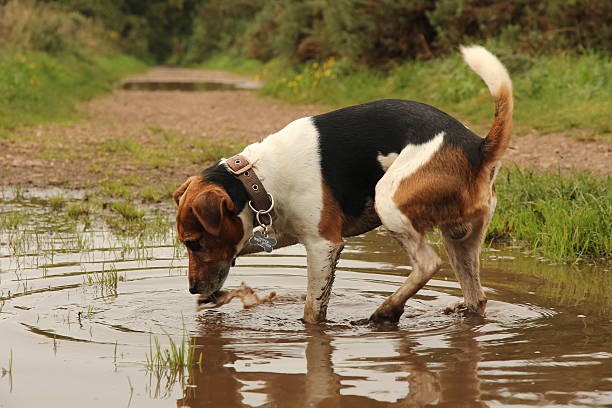
A multitude of germs and pathogens lurk in puddles of water that can make your dog sick. In warmer temperatures, puddles and pools offer almost perfect conditions for bacteria, parasites, and algae to multiply rapidly. But even in autumn, the risk of infection remains for a long time. Many pathogens have a chance of survival of several weeks, even in cold water. Smaller, stagnant bodies of water are a real breeding ground for pathogens. The longer the water “stands,” the more pathogens accumulate there, and the more “dangerous” it is when your dog drinks from it and thereby directly absorbs the ‘sickness makers.’ Even if our dogs, as scavengers, usually cope well with some pathogens, this risk should not be accepted regardless. An immune deficiency can be enough to no longer be able to withstand the pathogens. The leptospira and giardia pathogens are particularly dangerous.
Leptospirosis
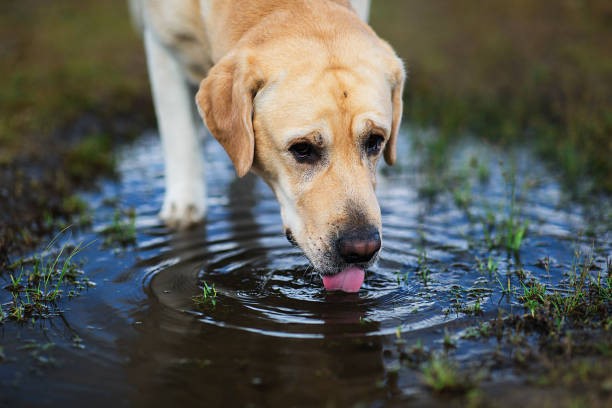
Leptospirosis is a dangerous bacterial infectious disease that can lead to severe liver and kidney damage and even death to the dog if left untreated. The leptospira pathogens are mainly transmitted through the urine of rats and mice. The water from pools and puddles is the main source of infection for our four-legged friends! Caution is also advised, as leptospirosis is one of the diseases transmitted from dogs to humans. In humans, pathogens can cause meningitis and organ damage. Detected early, this infection can be treated well with antibiotics. Don’t forget to have regular vaccinations at the vet!
Giardia
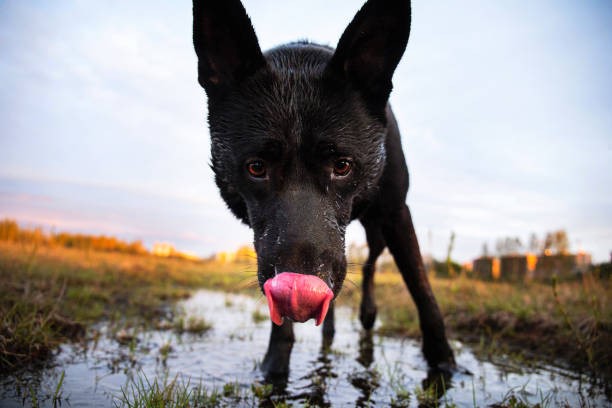
Our dogs can also become infected with Giardia through the contaminated puddle water. These are excreted and transmitted in the feces of affected animals. These tiny intestinal parasites can survive for several weeks in the cool puddle water. Here, too, caution is urgently required! Giardia is very contagious and can be transmitted to other animals as well as humans, provided they come into contact with the feces of the infected animal. Certain antibiotics or wormer treatments will help get rid of them. There is no preventive vaccination in this case.
Collecting pool of pollutants
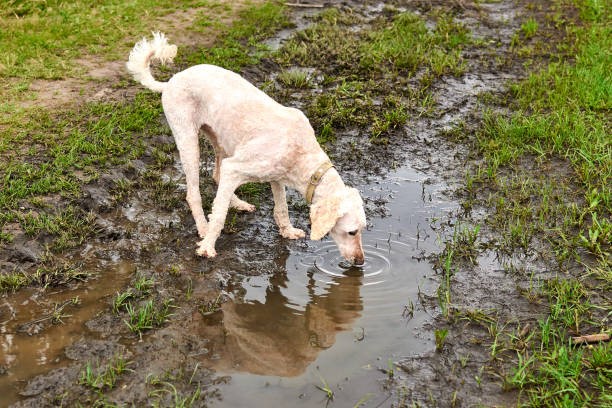
And it goes even further: all kinds of toxins and pollutants from the environment are washed into the puddle by the rain and collected there as in a collecting basin. These chemical residues are long: fertilizers, motor oil, pesticides, slurry, gasoline, road salt, and a lot more. It goes without saying that none of this is for the dog’s stomach. Especially in the times of the year when many fields and vineyards are fertilized and sprayed with chemicals, special care must be taken.
Better: play it safe
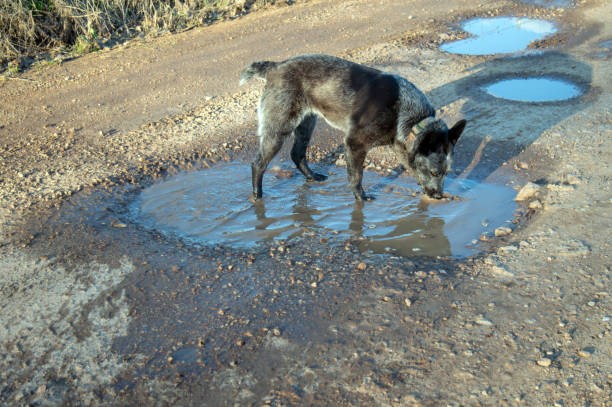
For the sake of your fur friend’s health, you should keep them from avoiding puddles and other stagnant bodies of water. Our dogs don’t know that this water can be harmful to them – unfortunately, we can’t explain it to them. Even so, it is our job to keep an eye on them and keep them safe from such dangers. On longer journeys or on hot days, it makes sense to fill a drinking bottle with fresh water at home and offer it to the dog as an alternative on the way. For dogs who absolutely love rainwater, you can also set up a container at home to directly catch the rainwater and offer it fresh (!). If the environment allows it, you can also walk past larger bodies of water with inflow and outflow or flowing water, which you can let your dog drink from with a clear conscience. They are considered low risk, and you don’t have to worry.


